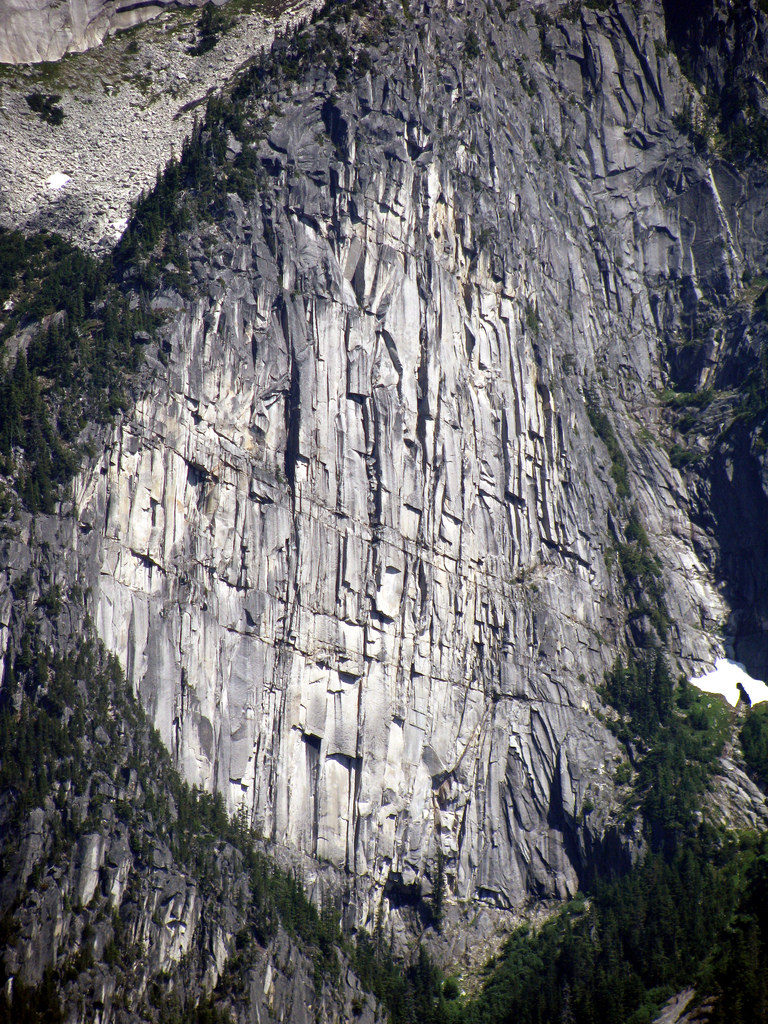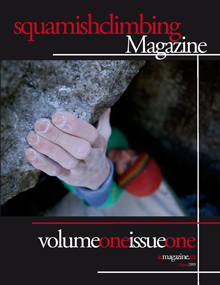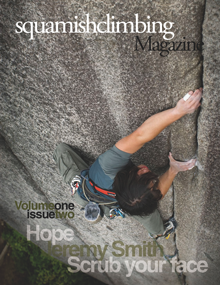Two weeks ago, we announced that local climber and alpinist, Marc-Andre Leclerc had made a winter solo ascent of Torres Egger to complete his trifecta of the Torres in Patagonia.
Marc-Andre has started to make the trek to Patagonia earlier each year and has been rewarded each time with seemingly decent weather. This week, Marc-Andre, along with partner Austin Siadak, made the first free ascent of Titanic (5.10 A2 950m) on the Torre Egger, first climbed by Maurizio Giarolli and Elio Orlandi.
Because Marc-Andre has been so busy climbing through the summer and fall season, we though it best to check in with Marc last week about a few of the things him and his partner Brette Harrington had accomplished over the summer. For those who don’t know, Marc and Brette have been working closely with a local company, Grade 7 Equipment, in the development of their light and fast porta-ledge. During the summer, Marc and Brette travelled to Baffin Island and put up two new lines, one on the NW Face of the Turret on Great Sail Peak, and the other on the West Buttress in a 24 hour push. After finishing there two lines, the pair were trying to free a more difficult line that goes around 5.13- but were caught in a massive storm that stopped their efforts.
After arriving home, Brette and Marc-Andre spent eight days establishing a free line, Hidden Dragon (5.12) up the Chinese Puzzle wall near Chilliwack. Here is what Marc had to say about the line.
Our route is about ten pitches, following very steep and physical cracks and took us so long because similar to new routing on the Chief it required some scrubbing prior to sending. It reminds us somewhat of U-Wall although it is more sustained and longer, with most pitches clocking in around 12b. Unlike most new route development in Squamish though we spent all the nights on the wall in our ledge and climbed the route ground up without fixing. This provided a great overall experience we found!
Here is an interview we had in our vault after Marc-Andrew returned home from Patagonia in November of 2015.
Hi Marc, welcome back home. How are things going?
Things are great! It looks like I chose a good winter to stick around home. Lots of snow and ice!
You recently got back from Patagonia, Can you tell us a bit about this trip and some of your objectives?
I went down at the end of their winter (our summer) hoping to solo Aguja Standhardt in winter via this awesome 800m ice chimney route called ‘Tomahawk’. My secondary objective was to solo Cerro Chalten aka Fitz Roy in winter. I got an awesome weather window and spent six days in the mountains, but the window began on the 20th of September, the official end date of winter. The route I was interested in on Cerro Chalten looked pretty bare of ice so I climbed Aguja Pollone instead as a warm up and then did Tomahawk, which was amazing! Later in the trip, I got more good weather and soloed two nice 15 pitch rock pillars. It was hot and sunny at that point and totally awesome and it was the day before my birthday as well!
Patagonia has gotten a lot of media coverage as of late. How has El Chaltan changed since your first trip there only two years ago?
My first trip there was in 2013. The town hasn’t changed that much since then although each summer it becomes busier and busier with both tourists and climbers. It is an odd town where a majority of the buildings are hostels or other accommodation for travellers and in high season most of the people in town are visitors. Relatively few people live there year round.
This is partially why I am becoming more interested in the off season/winter climbing oppose to the high season in Patagonia. It is great to meet the actual townspeople, learn the language, and make more of a connection with the culture of the place. When there are many western climbers around, you naturally tend to gravitate towards spending time with other people who speak the same language and you miss out on a lot that there is to learn about the area. It feels like going back in time in the winter with solitude and a total lack of ‘scene’.
I have to ask a little about the bouldering. Everyone says it is awesome, yet no one goes there just for bouldering. Is there enough to make a trip out of or just something folks do to stay fit?
People actually do go just to boulder. There are a ton of South Americans who drive there for trips every summer just to boulder, similar to the typical road trip in North America. They even have an outdoor competition complete with a raging after party. The first year I was in Chalten, Fred Nicole was there bouldering!
The climbing is really good, it reminds me a bit of Leavenworth. It tends to be steep and fingery, with more real holds and less ‘tricks’ than Squamish bouldering. There are some huge highballs too. When I was there, I think I did the first highball ascent of a big line that had a couple bolts in it. In winter, the conditions were good too, dry and cold, like dry crisp days during a Squamish winter. Basically, every day is dry and crisp!
There is definitely enough to make a trip of it, especially if you are willing to explore and walk (gasp!) a bit further to develop new problems. It helps to be strong, and a bit bold because most of the problems are hard, tall and proud.
You took up some soloing ventures by yourself on this trip. How do assess the risk of doing this kind of thing?
It’s undeniably risky going solo in the mountains, sometimes more so than climbing with a partner but perhaps not by the degree that most people imagine it to be. The most dangerous part by far is navigating glacial approaches. Luckily, I had excellent snow conditions and I could often dig down to ice to make anchors and belay myself across snow bridges. I think being alone makes me very aware and concentrated and it filters out distraction and provides a really clear sense of my personal interaction with the mountain; the silent conversation between you and the environment you are interacting with. It becomes easier to sense when the mountains do not want me there, and when they don’t mind my presence.
Does it come easy to you to go out by yourself or do you have some hairy moments in the process?
I’ve not really had many hairy moments soloing. One time, I was distracted by an incoming storm while ridge scrambling and I slipped and self arrested by grabbing a hold about 10ft further down on low 5th class terrain. That time, I retreated because things weren’t feeling right. I’ve gone up to solo routes, gotten up a few pitches and decided to down climb back to the ground. Every time I safely turn around and down climb, I often feel equally or more psyched than I do finishing a route because I was able to make a safe assessment of the situation and it feels good to reaffirm that I know my limitations.
You are back home now for an extended amount of time. What do you have going on here?
Right now, I’m super psyched to be in Canada for the winter! I’ll likely be staying in Agassiz quite a bit, the place where I grew up, because the mountains in the Fraser Valley are rad in the winter and also very quiet. I think when many ‘outdoorsy’ people think of Chilliwack they imagine redneck farmers and fail to see how amazing the mountains here are, especially in winter. I have some big winter climbing projects on Slesse where I hope to take the idea of big wall free climbing and combine it with winter alpine climbing; stepping off the porta-ledge onto super rad hard mixed climbing on a big alpine wall! I am also really psyched on doing first descents of technical ski lines and combining my soloing with that pursuit; soloing up big winter routes and then skiing down rad unknown lines. In Squamish, I also have my project on the Tantalus wall, which I managed to send the first two pitches of in December, its probably the best climbing I have ever opened so I need to continue that project before it gets too warm for hard slab.
You have been known to take huge walking adventures in the North Shore mountains. How does the local mountains energize you to return every year?
The local mountains are where I learned about going for adventures and built my skills and endurance for climbing in bigger places so there is always that special connection. Last summer, I had a hard time motivating to explore locally because it was so dry and the mountains seemed so unhealthy that it made me sad. But right now I am really inspired to explore in the winter time, because the mountains change radically and it is also an opportunity to take what I’ve learned elsewhere to do new things locally; I find that really exciting!
Thanks Marc! All the best for the next adventure!
Special thanks to Marc-Andre for keeping us posted! To follow Marc’s adventures, follow him on instagram!













